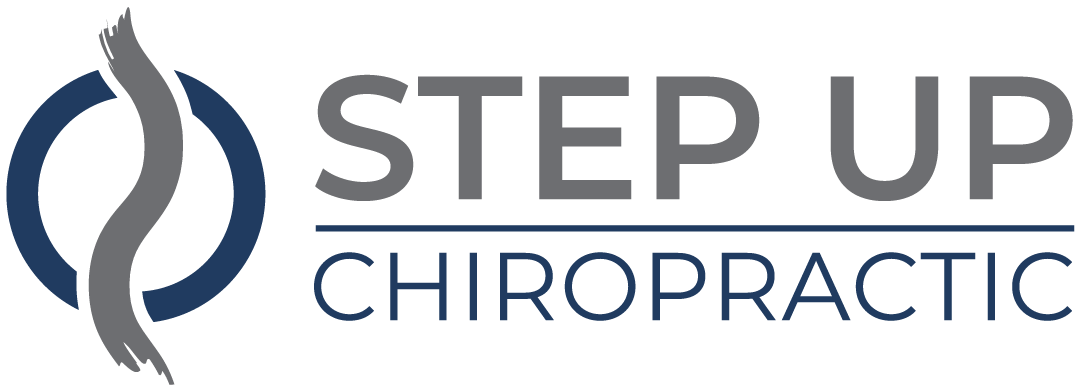If you're living with fibromyalgia, you might be searching for genuine ways to ease your symptoms beyond traditional medication. Exploring holistic strategies like mindfulness, dietary changes, and tailored exercise routines can make a significant difference in your overall well-being. Understanding how these elements interact with your body could reveal new paths to relief that you haven't considered yet. As you navigate this complex condition, you may find that some approaches resonate more than others, leading you to question what truly works for you. So, where do you start?
Understanding Fibromyalgia
Fibromyalgia is a complex condition that can feel like a constant battle against widespread pain and fatigue. You might experience tenderness in specific areas, often referred to as "trigger points," which can make even the simplest tasks seem intimidating. Understanding fibromyalgia is vital for finding effective relief and managing your symptoms.
This condition affects how your brain processes pain signals, leading to heightened sensitivity and discomfort. You may notice that stress, sleep disturbances, and even weather changes can exacerbate your symptoms. It's not just physical; fibromyalgia often brings emotional challenges, including anxiety and depression, which can further complicate your experience.
Recognizing the symptoms is the first step towards relief. You might deal with chronic fatigue, disrupted sleep, and cognitive difficulties, often called "fibro fog." You may feel as though you're moving through a fog, struggling to concentrate or remember tasks. This can be frustrating, but understanding that these symptoms are part of a broader condition can help you advocate for your health.
It's essential to work closely with healthcare professionals who understand fibromyalgia. They can help you develop a tailored approach to manage your symptoms effectively. You might explore various treatment options, including medications, physical therapy, and lifestyle adjustments.
Mindfulness and Meditation
Managing fibromyalgia symptoms often requires a holistic approach, where mindfulness and meditation can play a significant role. These practices help you develop a deeper awareness of your body and mind, allowing you to respond to pain and stress more effectively. By incorporating mindfulness into your daily routine, you can cultivate a sense of calm that helps mitigate the overwhelming feelings often associated with fibromyalgia.
Start by setting aside a few minutes each day for meditation. Find a quiet space, sit comfortably, and focus on your breath. As thoughts arise, gently acknowledge them and return your attention to your breathing. Over time, this practice can help you detach from pain, reducing its emotional impact. You might also consider guided meditations specifically designed for fibromyalgia, which can provide additional support and structure.
Mindfulness isn't just about meditation; it's about being present in your daily activities. Try to engage fully in whatever you're doing, whether it's eating, walking, or simply resting. This can help decrease your anxiety and improve your overall mental well-being.
Additionally, mindfulness techniques can empower you to recognize triggers that exacerbate your symptoms. By becoming more aware of your body's signals, you can make informed choices that promote better health.
In short, embracing mindfulness and meditation can transform your experience with fibromyalgia, offering you tools to navigate your symptoms with greater ease and resilience.
Dietary Modifications
When managing fibromyalgia, your diet can play an essential role in symptom relief.
Incorporating anti-inflammatory foods and being aware of gluten sensitivity may help reduce pain and improve your overall well-being.
Let's explore how these dietary modifications can make a difference for you.
Anti-Inflammatory Foods
Incorporating anti-inflammatory foods into your diet can significantly alleviate symptoms associated with fibromyalgia. These foods help reduce inflammation and may ease pain, fatigue, and discomfort.
Start by adding plenty of fruits and vegetables, especially those rich in antioxidants, like berries, spinach, and kale. These colorful options can combat oxidative stress in your body.
Next, consider incorporating healthy fats, such as those found in avocados, nuts, seeds, and olive oil. Omega-3 fatty acids, primarily found in fatty fish like salmon and sardines, are particularly beneficial for reducing inflammation.
Don't forget about whole grains, too; options like quinoa, brown rice, and oats can provide sustained energy without triggering inflammation.
You might also want to explore herbs and spices like turmeric and ginger, known for their anti-inflammatory properties. They can easily be mixed into dishes, making it simple to enhance your meals.
Finally, stay hydrated. Drinking enough water is essential for overall health and can help manage symptoms.
Gluten Sensitivity Awareness
Many people with fibromyalgia may not realize they've gluten sensitivity, which can exacerbate their symptoms. If you've been struggling with fatigue, pain, or digestive issues, it's worth considering whether gluten could be a factor.
Gluten, a protein found in wheat, barley, and rye, can trigger an inflammatory response in sensitive individuals, leading to increased discomfort and fatigue.
To determine if gluten is affecting you, try eliminating it from your diet for at least four weeks. Pay attention to how your body reacts. After the elimination period, reintroduce gluten and monitor any changes in your symptoms. If you notice a worsening of your fibromyalgia symptoms, you might've gluten sensitivity.
When making dietary modifications, focus on whole, unprocessed foods like fruits, vegetables, lean proteins, and gluten-free grains such as quinoa and rice. This not only helps reduce gluten intake but also supports your overall health.
Always consult a healthcare professional before making significant changes to your diet, as they can guide you through the process and verify you're meeting your nutritional needs. Raising awareness of gluten sensitivity may empower you to take actionable steps towards symptom relief.
Exercise and Physical Activity
When you manage fibromyalgia, incorporating exercise and physical activity can greatly improve your symptoms.
Low-impact exercises, stretching, and flexibility techniques not only enhance your mobility but also boost your overall well-being.
Let's explore how you can easily integrate movement into your daily routine for better symptom relief.
Low-Impact Exercise Benefits
Low-impact exercise can considerably enhance your quality of life if you're living with fibromyalgia. These activities, like walking, swimming, or cycling, can help reduce pain, improve mood, and increase overall stamina without putting excessive strain on your body. You don't need to push yourself to extremes; even short sessions can be beneficial.
Engaging in low-impact exercises regularly helps stimulate the release of endorphins, which are natural painkillers. This can lead to a reduction in fibromyalgia symptoms, making daily tasks feel more manageable. Additionally, these workouts can improve your sleep quality, allowing you to wake up feeling more refreshed and energized.
Moreover, low-impact exercise can foster social connections. Joining a class or finding a workout buddy can provide motivation and support, making your journey toward symptom relief feel less isolating.
Remember, consistency is key, so aim for at least 150 minutes of moderate exercise each week.
Listen to your body and adapt your routine as needed. You might be surprised at how much better you feel with just a little movement every day. It's all about finding what works for you and sticking with it.
Stretching and Flexibility Techniques
Incorporating stretching and flexibility techniques into your routine can considerably alleviate fibromyalgia symptoms. These practices can help reduce muscle tension, improve circulation, and increase your overall range of motion.
By making stretching a regular part of your day, you can enhance your physical comfort and emotional well-being.
Here are some effective techniques to reflect upon:
- Gentle Neck Stretches: Roll your neck slowly to relieve tension and improve mobility.
- Seated Forward Bend: Sit on the floor with your legs extended and reach toward your toes for a calming stretch.
- Cat-Cow Pose: Shift between arching and rounding your back to promote spinal flexibility and ease stiffness.
- Quadriceps Stretch: Stand and pull one foot to your glutes, stretching the front of your thigh.
These techniques don't require much time and can be done anywhere.
Remember to listen to your body; if something doesn't feel right, modify the stretch or skip it.
Consistency is key, so aim for short sessions throughout the week, and soon enough, you'll notice a significant boost in your overall comfort and mobility.
Incorporating Movement Into Routine
Adding movement to your daily routine can greatly enhance your fibromyalgia management. Regular physical activity helps reduce pain, improve mood, and boost your overall energy levels. Start by incorporating simple activities like walking, swimming, or cycling into your day. Even short bursts of movement can make a difference.
You don't have to commit to intense workouts; gentle exercises such as yoga or tai chi can be incredibly beneficial. These practices not only improve your flexibility and strength but also promote relaxation and mindfulness. Aim for about 30 minutes of activity a few times a week, and listen to your body—rest when you need to.
Finding a routine that fits your lifestyle is key. Try scheduling your movement sessions at times when you usually feel more energetic. Consider partnering with a friend or joining a class to keep motivation high.
Remember, consistency is more important than intensity, so focus on making movement a regular part of your day.
Lastly, celebrate your achievements, no matter how small. Each step forward is a victory in your journey towards managing fibromyalgia symptoms effectively. You'll likely notice positive changes in how you feel both physically and mentally.
Herbal Remedies
Herbal remedies offer a natural approach to alleviating fibromyalgia symptoms, providing potential relief without the side effects often associated with conventional medications. Many individuals find these alternatives appealing as they seek to manage their pain and fatigue in a holistic manner.
You might consider incorporating some of these popular herbal options into your routine:
- Turmeric: Known for its anti-inflammatory properties, turmeric can help reduce pain and improve overall wellness.
- Ginger: This warming herb may help diminish muscle soreness and enhance circulation, which is particularly beneficial for those with fibromyalgia.
- Ashwagandha: Often used in Ayurvedic medicine, ashwagandha may help combat stress and fatigue, promoting a sense of calm and balance in your life.
- St. John's Wort: Traditionally used for mood support, this herb might help alleviate the feelings of depression and anxiety that can accompany fibromyalgia.
Before trying any herbal remedy, it's essential to consult with your healthcare provider, especially if you're taking other medications. Some herbs can interact with prescription drugs, leading to unwanted effects.
Start with small doses and monitor your body's response to determine what works best for you. Remember, while herbal remedies can be beneficial, they should complement a thorough approach to managing fibromyalgia, including lifestyle changes and professional guidance.
Embracing these natural options might just lead you to a more balanced and manageable daily life.
Sleep Hygiene Practices
Good sleep hygiene practices are essential for managing fibromyalgia symptoms, as quality rest can greatly impact your pain levels and overall well-being. Establishing a consistent sleep schedule is one of the first steps you can take. Try to go to bed and wake up at the same time every day, even on weekends. This helps regulate your body's internal clock and can improve the quality of your sleep.
Creating a calming bedtime routine can also make a difference. Consider activities like reading, gentle stretching, or meditation to help signal to your body that it's time to wind down. Make your sleep environment comfortable; keep your bedroom cool, dark, and quiet. Investing in a good mattress and pillows that support your preferred sleeping position can also enhance your rest.
Limit exposure to screens before bedtime, as the blue light emitted can interfere with your body's production of melatonin. Instead, opt for relaxing activities that don't involve electronic devices. Be mindful of what you consume in the evening; avoid caffeine and heavy meals close to bedtime, as these can disrupt your sleep patterns.
Lastly, if you find yourself unable to sleep after 20 minutes, get out of bed and do something calming until you feel sleepy again. This prevents your body from associating the bed with wakefulness.
Alternative Therapies
Exploring alternative therapies can offer valuable relief for fibromyalgia symptoms, complementing traditional treatments. Many individuals find that these therapies help alleviate pain, improve sleep, and enhance overall well-being.
Here are some alternative approaches you might consider:
- Acupuncture: This ancient practice involves inserting thin needles into specific points on the body, which may help relieve pain and promote relaxation.
- Massage Therapy: Therapeutic massage can reduce muscle tension and improve circulation, providing you with a much-needed respite from discomfort.
- Meditation and Mindfulness: Engaging in mindfulness practices can help you manage stress and anxiety, which are often exacerbated by fibromyalgia. Mindfulness can enhance your awareness of bodily sensations, leading to better symptom management.
- Herbal Supplements: Certain herbs, like turmeric or ginger, have anti-inflammatory properties. However, it's important to consult with a healthcare provider before trying any new supplements to verify they're safe for you.
Incorporating these alternative therapies into your routine may offer a holistic approach to managing your fibromyalgia symptoms.
It's vital to listen to your body and experiment with different methods to find what works best for you. Keep in mind that these therapies are most effective when used alongside your current treatment plan.
As you explore these options, you'll likely discover new ways to enhance your quality of life and bring greater balance to your daily routine.
Building a Support Network
Building a strong support network is essential for managing fibromyalgia and can make a significant difference in your journey. Surrounding yourself with understanding and encouraging individuals helps you feel less isolated, which is vital when dealing with the emotional and physical challenges of this condition. Friends, family, and fellow fibromyalgia warriors can provide empathy, advice, and a listening ear when you need it most.
Start by reaching out to people you trust. Share your experiences and educate them about fibromyalgia so they can better understand what you're going through. They mightn't fully grasp your struggles, but their willingness to learn can strengthen your bond.
Consider joining local support groups or online communities focused on fibromyalgia. These spaces offer a chance to connect with others who genuinely understand your journey, share tips, and provide emotional support.
Don't forget to involve healthcare providers in your network. Doctors, therapists, and nutritionists can offer valuable insights and treatments tailored to your needs. Keep communication open with them, and don't hesitate to seek their guidance on building your support network.
Conclusion
Incorporating these authentic approaches can make a real difference in managing your fibromyalgia symptoms. By embracing mindfulness, making dietary changes, engaging in gentle exercise, and prioritizing sleep, you can enhance your overall well-being. Don't forget the power of herbal remedies and the benefit of a supportive community. Remember, finding what works for you is key, so stay patient and open-minded on your journey to relief. You deserve to feel your best!




